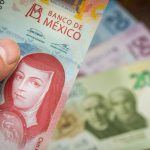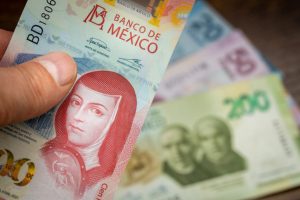New York ( Business) — In less than a week, a 30-year-old businessman once hailed as a modern-day JP Morgan watched his digital empire, including billions of his own fortune, evaporate in a death spiral that shook the foundations of the crypto industry. One billion dollars.
On Thursday, Sam Bankman-Fried issued a mea culpa: “I’m sorry. That’s the most important thing. I f**ked up and I should have done better,” Bankman-Fried said in a long twitter thread apologizing to the investors and clients of FTX, the exchange platform he founded in 2019.
Sam Bankman-Fried, Founder and CEO of FTX Cryptocurrency Derivatives Exchange Credit: Jeenah Moon/Bloomberg/Getty Images
Failures are not uncommon in the murky and largely unregulated world of cryptocurrency, but FTX is not your average cryptocurrency startup. Its near collapse this week represents a potential turning point for an industry that many critics say has been shunned for far too long.
So what happened to FTX and why is the whole crypto world freaking out over it? There are still many uncertainties, but here is what we know.
suspicious finance
Last week, the crypto news website CoinDesk published an article based on a leaked financial document from Bankman-Fried’s hedge fund, Alameda Research.
The report suggested that Alameda’s business rested on shaky financial footing. In other words, most of its assets are in FTT, a digital token minted by Alameda’s sister company, FTX. That was a red flag for investors, as the companies were, on paper at least, separate. However, Alameda’s disproportionate holdings of the token suggested the two were closely linked.
On Sunday, the CEO of Binance, FTX’s much bigger rival, said his company was liquidating $580 million worth of FTX holdings. That set off a withdrawal storm and FTX didn’t have the money to facilitate.
An alliance between rivals
By Monday, concerns about Alameda and FTX had trickled down to the broader crypto market. But Bankman-Fried was defiant, tweeting that FTX and its assets were “fine.” He also sparred with Binance CEO Changpeng Zhao, whose tweet prompted the run on FTX deposits.
There was clearly bad blood between the two, which is why the industry was shocked when the pair announced a tentative deal on Tuesday for Binance to bail out FTX.
“This afternoon, FTX requested our help,” Zhao tweeted, noting that there was a “significant liquidity crisis” at the company and that Binance would need to conduct corporate due diligence before moving forward with any deal.
However, almost immediately after taking a look under the hood, Binance began to backtrack.
Meanwhile, Bankman-Fried’s personal fortune also collapsed. According to the Bloomberg Billionaires Index, Bankman-Fried’s net worth plummeted 94% in a single day, from more than $15 billion to just under $1 billion, the biggest one-day loss ever recorded for the index. (His wealth estimate was based on the assumption that Binance would ultimately bail out FTX, where much of Bankman-Fried’s personal assets are held. Meaning his net worth could fall further.)
a sudden twist
On Wednesday, cryptocurrencies continued to fall as investor anxiety over the FTX bailout spread. Bitcoin and ether, the two most popular tokens, hit their lowest level in two years.
The sell-off deepened after media reports emerged that Binance was leaning to walk away from the deal. Sure enough, on Wednesday afternoon, Zhao tweeted a withering assessment of FTX’s problems:
“At first, our hope was that we could help FTX clients provide liquidity, but the issues are beyond our control or ability to help.”
He also alluded to allegations of “mishandled funds” and investigations by US regulators.
Binance was out. FTX’s best chance at a lifeline was gone.
Damage control in FTX
The full extent of FTX’s financial problems is not yet known, but various reports say the company is facing an $8 billion shortfall. Without a quick injection of capital, as reportedBankman-Fried told investors Thursday that the company was facing bankruptcy.
Ever since the Binance deal fell apart, Bankman-Fried has been struggling to raise funds. On Thursday, he tweeted that there were “multiple players” the firm was in talks with.
“We spent the week doing everything possible to increase liquidity,” he wrote in his apology thread. “Every penny” of that, plus the remaining collateral, will go towards getting users whole, followed by investors and employees.”
What was FTX’s mistake?
Despite its reputation as a reliable and low-risk investment portal, FTX’s business seems to have been built on a highly risky, complex and leveraged type of trading.
Clients deposited their money to participate in cryptocurrency trading. But it appears that FTX instead took billions of dollars of that money and lent it to its sister firm, Alameda, to finance those high-stakes bets, according to The Wall Street Journal.
Bloomberg columnist Matt Levine put it another way: “FTX took their customers’ money and traded it for a bunch of magic beans, and now the beans are worthless.”
At the end of the day, FTX experienced the crypto equivalent of a classic bank run. Clients wanted their money and FTX didn’t have it.
In traditional finance, customer funds are protected by the Federal Deposit Insurance Corporation, which insures deposits. However, the FDIC does not insure stocks or cryptocurrencies, leaving the fate of FTX clients and investors in doubt.
One such investor was the Ontario Teachers’ Pension Plan, which said it invested $95 million in both FTX International and its US entity “to gain small-scale exposure to an emerging area in the fintech sector.” In a statement on Thursdaythe plan noted that any loss on his investment would have “limited impact” as it represents less than 0.05% of his total net assets.
Whats Next?
On Thursday, Bankman-Fried said Alameda Research would reduce trading while FTX focuses on emergency fundraising.
But after Binance, the industry’s largest exchange, balked at bailing out its rival, FTX may have little choice.
Bankman-Fried told staff in a memo obtained by The New York Times that FTX had been in talks with crypto entrepreneur Justin Sun, who tweeted that he is working to “work out a solution” with FTX.
Meanwhile, US authorities, including the US Department of Justice and the Securities and Exchange Commission, are investigating FTX’s business, according to Bloomberg.















